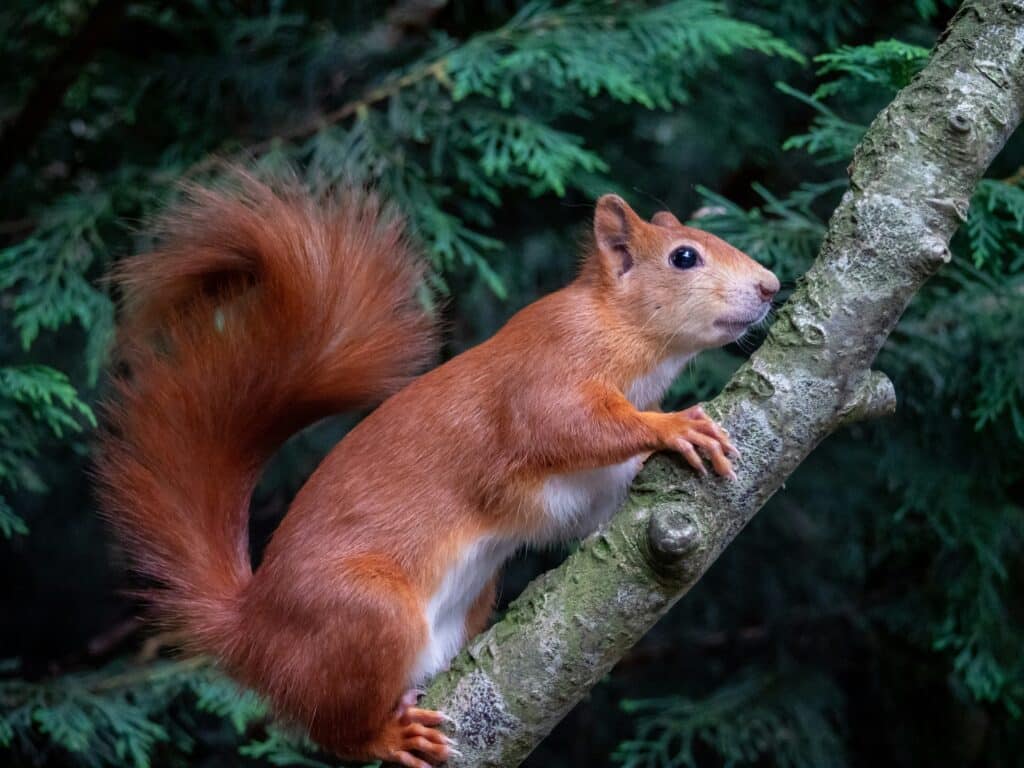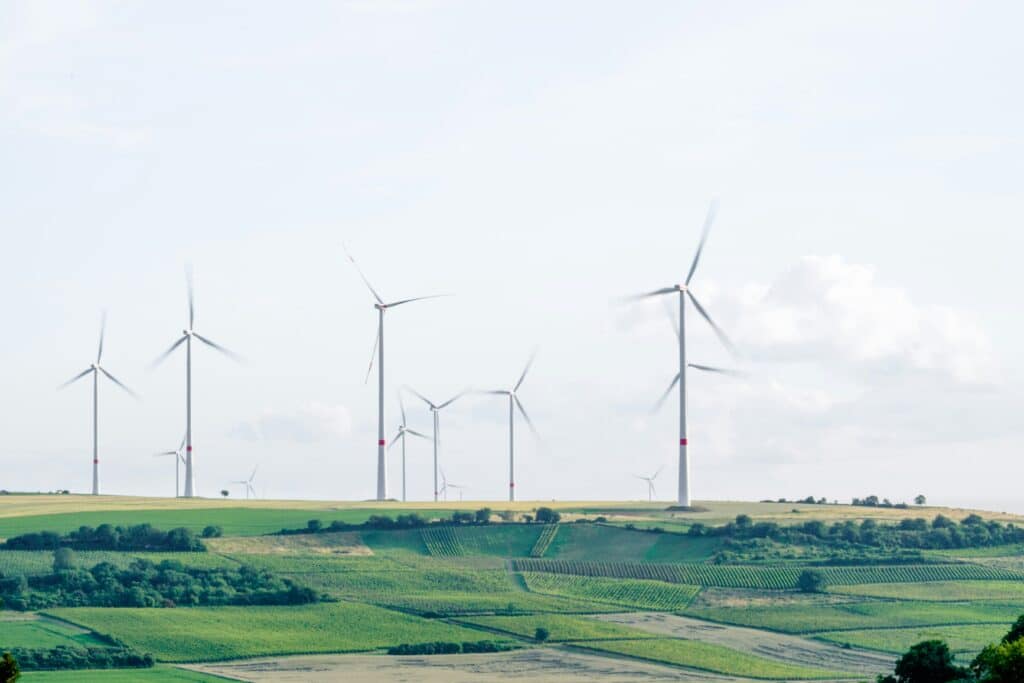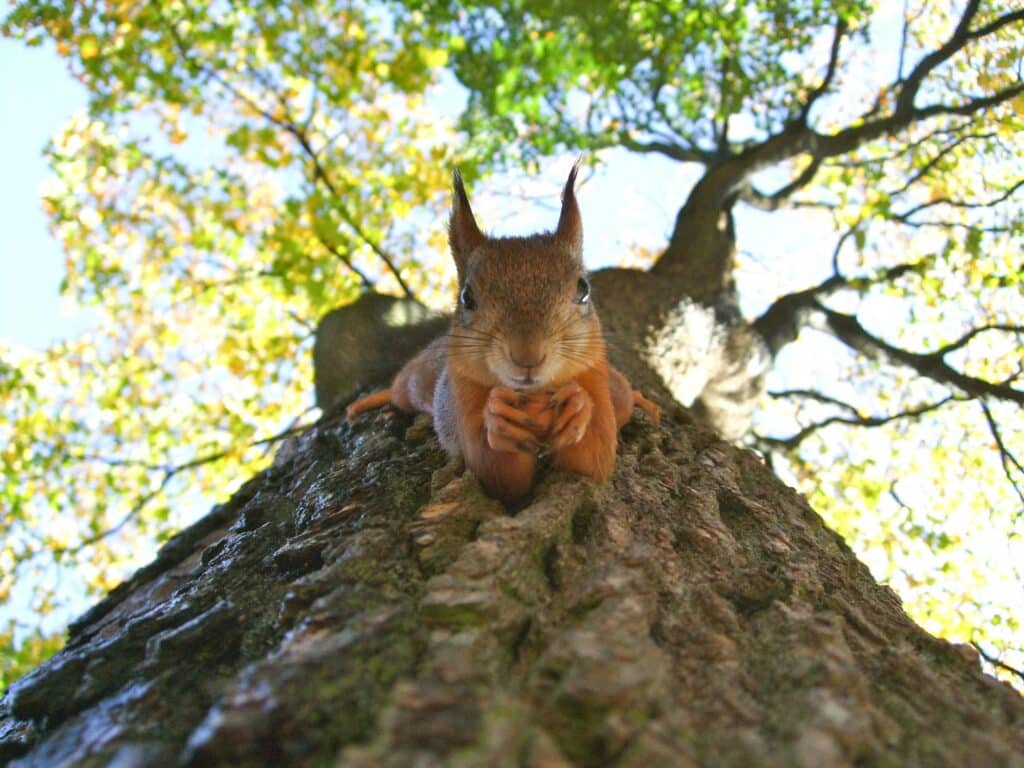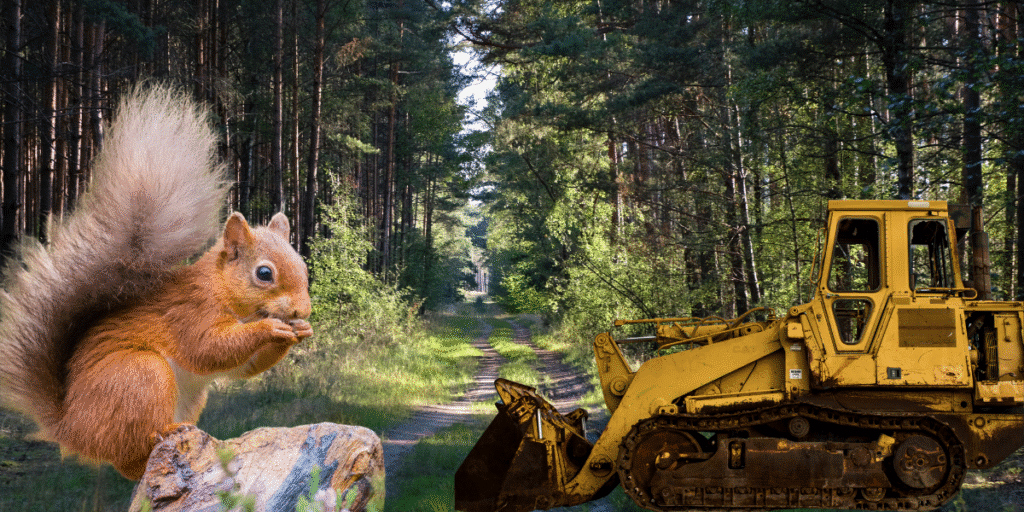The Wildlife Trust of South & West Wales (WTSWW) has launched a campaign against a planned renewable ‘energy park’ that threatens one of the few remaining Red Squirrel populations in Wales. The Red Squirrels of the Bryn Arau Duon forest are one of only three surviving colonies in the country.
Once a common sight in forests across the country, Red Squirrels are classified as Endangered throughout England and Wales. The population in mid-Wales is the only stable population that can sustain itself without artificial releases. This means that the squirrels of Bryn Arau Duon possess genetics that are unique to the area, making them even more important to protect. But Galileo Empower Limited’s proposed Bryn Cadwgan Energy Park threatens them and their fragile habitat.
Along with Red Squirrels, the Galileo Empower project also threatens otters, pine martens, water voles, bats and several species of bird.

A haven
The Mid Wales Red Squirrel Partnership (MWRSP), now led by WTSWW has been looking out for red squirrels in Mid-Wales’ forests for decades. The partnership released a YouTube video of the creatures living in the Bryn Arau Duon forest, saying that many people “have an affinity to these animals” in the local community:
Adam Dawson, Conservation Officer at WTSWW, said that the hidden cameras “have captured wonderful insights into the lives of these secretive squirrels and show what a stronghold this area is for this endangered species”.
A threat to a vital habitat

According to the Wildlife Trust of South & West Wales the 1120-hectare Galileo Empower scheme – which would be built on land near Lampeter and Llanwrtyd Wells – would threaten Carmarthenshire’s remaining red squirrels. The group wrote:
“If the proposed development were to go ahead, the clearing of trees would destroy and fragment their habitat. This along with disturbance from construction would force any surviving Red Squirrels into the wider area, making them vulnerable to the fatal squirrel pox virus carried by Grey Squirrels as well as predators.”
The Scotland-based company’s plans include 19 wind turbines, solar photovoltaic (PV) panels and solar energy and battery energy storage systems. The Bryn Cadgwan website claims that the plans will make a “significant contribution to decarbonisation of our electricity system” and benefit the local population.
However Sarah Kessell, CEO of WWTSW says she:
“understands the necessity for renewable energy developments, especially in the climate crisis we are facing, but we believe that development should not come at the expense of nature.”
The project has been in the initial stages since 2021, but is currently at the statutory pre-application consultation stage. Galileo Empower is expected to submit a full application to the Welsh Government by the end of 2025. The proposed location for the project neighbours several Sites of Special Scientific Interest, nature reserves and Special Protection Areas.
The company is trying to sweeten the pill for the local community by offering a £34 million ‘community wealth fund’ to fund local projects.

However, according to Kessell of the WTSWW:
“All development must be located, designed and delivered in a way that contributes to nature’s recovery, not its decline. We’re in a biodiversity crisis with 1 in 6 species at risk of extinction in Wales. We can’t risk losing another iconic species from our landscape.”
Mitigation measures are insufficient
Galileo Empower says it will create “new broadleaved woodland, providing food and corridors for red squirrels, with canopy bridges aiding movement across tracks”, and that it wants to work closely with WTSWW to “help achieve this balance”.
However, WTSWW maintains that the planned mitigation measures for the project are nowhere near enough. Bryn Arau Duon Forest in Carmarthenshire is a fragile and irreplaceable natural habitat. The felling of trees and disturbance caused by the construction work could decimate the Red Squirrel population. The species needs mature conifers and contiguous tree cover to thrive. Newly planted conifers, which could be planted as a way to ‘mitigate’ the project, would not be sufficient for the squirrels to survive.
It’s impossible to put a financial value on lives lost
Wind energy can often be damaging to wildlife and biodiversity. Earlier this year conservationists and researchers reacted with dismay to the Scottish Government approving SSE Renewables’ offshore windfarm at Berwick Bank. The RSPB and others are deeply concerned that the project will negatively affect Puffins, Kittiwakes and Gannets. The windfarm will be close to Bass Rock, home to the world’s largest colony of Northern Gannets. The RSPB predicts that Berwick Bank will “be one of the most damaging windfarms for birds we are aware of anywhere on the planet”.
The Scottish Government is demanding “seabed compensation” measures from the company, but Protect the Wild doesn’t think it’s possible to ‘mitigate’ or compensate for the tens of thousands of birds’ lives that are predicted to be lost.
Looking at both the threat to Wales’ Red Squirrels and the seabirds of Berwick Bank, Protect the Wild’s Rob Pownall commented that dealing with climate change shouldn’t be at the expense of biodiversity:
“Of course we need to tackle the climate crisis, but it cannot come at the expense of already vulnerable wildlife. Red Squirrels are clinging on in just a handful of places, and to bulldoze through their last habitats in the name of ‘green energy’ is both reckless and shortsighted.
We’ve already seen the damage done by the Berwick project to puffins, kittiwakes and gannets, and now the government is pushing through a Planning and Infrastructure Bill that will mean even fewer checks and balances on developments like these. If we’re serious about a sustainable future, it has to work for wildlife as well as for people.”
As the government steamrollers through changes to the planning system that will make it even easier to push through environmentally damaging projects (including reforms that Keir Starmer said in January would put an end to “challenge culture” and keep people from using the courts to “frustrate growth”), the Berwick Bank and Bryn Cadgwan schemes stand as reminders of how bad things could get for British wildlife.
Please support the Wildlife Trust of South & West Wales by signing the online petition to object to the Bryn Cadwgan Energy Park before 1 October.
-
Find out more about the Wildlife Trust of South & West Wales’ campaign here.
-
Labour’s proposed Planning and Infrastructure Bill will make it easier for developers to push through ecologically damaging projects like this one. Sign Protect the Wild’s e-petition calling for the government to scrap its plans and read our article on ‘Five reasons the Planning and Infrastructure Bill will be disastrous for British wildlife’.
Andy Willis, Jonny Gios and Transly Translation Agency on Unsplash

